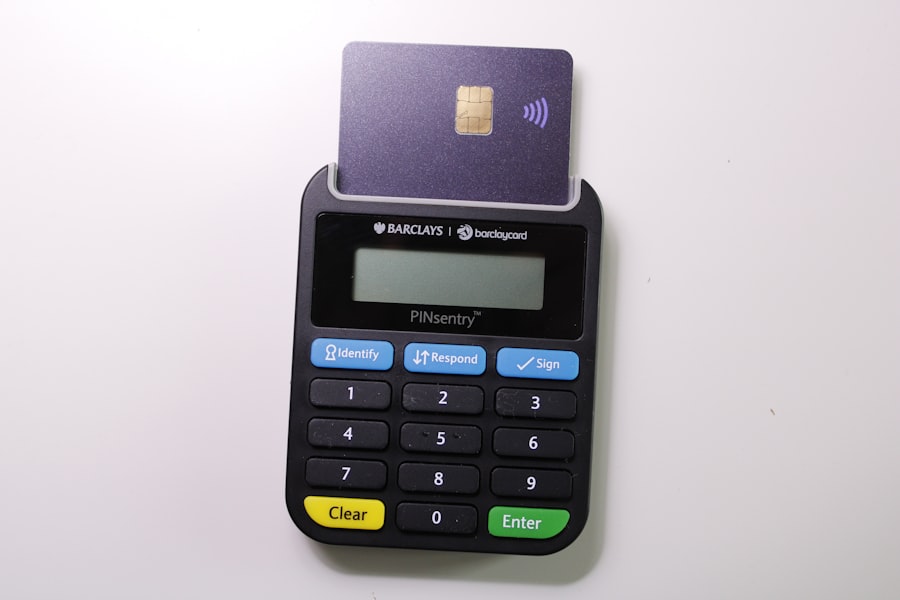
Credit card rent payment fees are charges that landlords or property management companies impose when tenants choose to pay their rent using a credit card. These fees are often a percentage of the rent amount and can vary significantly depending on the payment processor or the policies of the landlord. The rationale behind these fees is that credit card transactions incur costs for the landlord, including processing fees charged by credit card companies.
As a result, landlords may pass these costs onto tenants who opt for the convenience of paying with a credit card. The prevalence of credit card rent payment fees has increased as more tenants seek flexible payment options. Many people prefer using credit cards for their transactions due to the benefits they offer, such as rewards points, cash back, or the ability to manage cash flow more effectively.
However, the convenience of using a credit card can come at a cost, leading to additional expenses that tenants must consider when deciding how to pay their rent. Understanding these fees is crucial for tenants who want to make informed financial decisions.
Key Takeaways
- Credit card rent payment fees are charges imposed by landlords or property management companies for using a credit card to pay rent.
- Credit card rent payment fees typically work as a percentage of the rent amount or a flat fee, and are added to the total rent payment.
- Different types of credit card rent payment fees include convenience fees, processing fees, and transaction fees.
- Factors that can affect credit card rent payment fees include the type of credit card used, the landlord’s payment processing system, and the rent amount.
- To avoid credit card rent payment fees, tenants can consider alternative payment methods such as direct bank transfers, money orders, or checks.
- Using a credit card for rent payments can offer convenience and potential rewards, but it may also lead to additional fees and potential interest charges.
- Tips for managing credit card rent payment fees include understanding the terms and conditions of the credit card, setting up automatic payments, and budgeting for potential fees.
- Alternatives to using a credit card for rent payments include online payment platforms, direct debit, and third-party rent payment services.
How do credit card rent payment fees work?
When a tenant pays their rent with a credit card, the transaction is processed through a payment gateway that connects the landlord’s account with the credit card network. This process involves several steps, including authorization, processing, and settlement. During this transaction, the payment processor charges a fee for facilitating the payment, which typically ranges from 2% to 4% of the total rent amount.
This fee is often referred to as a merchant service fee and is deducted from the amount paid to the landlord. For example, if a tenant’s monthly rent is $1,500 and the credit card processing fee is 3%, the tenant would incur an additional charge of $45 on top of their rent payment. This fee is usually added to the total amount due, meaning that tenants need to be aware of how much they will actually pay when using a credit card.
Some landlords may choose to absorb these fees as part of their business model, while others may explicitly state that tenants are responsible for covering them. It is essential for tenants to read their lease agreements carefully to understand any potential fees associated with credit card payments.
Understanding the different types of credit card rent payment fees

Credit card rent payment fees can be categorized into several types, each with its own implications for tenants. The most common type is the flat-rate fee, which is a fixed amount charged per transaction regardless of the rent amount. For instance, a landlord might charge a flat fee of $30 for any credit card payment, which could be more advantageous for tenants with lower rent amounts but less so for those with higher rents.
Another type of fee is the percentage-based fee, which varies according to the total rent amount. This fee structure can be more equitable for landlords since it scales with the size of the transaction. However, it can also lead to higher costs for tenants paying larger rents.
Additionally, some landlords may implement a tiered fee structure where different rates apply based on specific thresholds of rent payments. For example, a landlord might charge 2% for payments up to $1,000 and 3% for payments exceeding that amount. There are also potential hidden fees associated with credit card payments that tenants should be aware of.
These can include convenience fees charged by third-party payment processors or additional charges for using certain types of credit cards, such as rewards cards that may have higher processing costs. Understanding these various types of fees can help tenants make more informed decisions about how they choose to pay their rent.
Factors that affect credit card rent payment fees
| Factors | Description |
|---|---|
| Credit Score | The higher the credit score, the lower the rent payment fees. |
| Payment History | A history of on-time payments can reduce rent payment fees. |
| Utilization Ratio | Lower credit utilization can lead to lower fees. |
| Income Level | Higher income may result in lower rent payment fees. |
| Debt-to-Income Ratio | A lower ratio can lead to lower fees. |
Several factors influence the amount of credit card rent payment fees that tenants may encounter. One significant factor is the type of payment processor used by the landlord or property management company. Different processors have varying fee structures and rates, which can directly impact how much tenants are charged when they pay their rent with a credit card.
For instance, some processors may offer lower rates for high-volume transactions, while others may charge higher fees for smaller payments. Another factor is the overall rental market and competition among landlords. In areas where there are many rental options available, landlords may be more inclined to absorb some or all of the credit card processing fees to attract tenants.
Conversely, in markets with limited rental options, landlords may feel less pressure to waive these fees and may pass them on to tenants without hesitation. Additionally, the tenant’s credit card type can also play a role in determining fees. Some credit cards come with higher processing costs due to their rewards programs or other benefits.
For example, if a tenant uses a premium rewards card that offers significant cash back or travel points, the landlord may incur higher transaction fees and subsequently pass those costs onto the tenant. Understanding these factors can help tenants navigate their options and potentially minimize their expenses when paying rent.
How to avoid credit card rent payment fees
Avoiding credit card rent payment fees requires proactive planning and awareness of available options. One effective strategy is to communicate directly with landlords or property management companies about their payment policies. Some landlords may be willing to negotiate or waive fees for tenants who consistently pay on time or who have established a good rental history.
Building a positive relationship with landlords can sometimes lead to more favorable terms regarding payment methods. Another approach is to explore alternative payment methods that do not incur additional fees. Many landlords accept electronic bank transfers or ACH payments, which typically do not carry the same processing costs as credit card transactions.
Tenants can set up automatic payments through their bank accounts to ensure timely rent payments without incurring extra charges. Additionally, some financial institutions offer services that allow tenants to pay their rent via debit cards or direct transfers without incurring additional fees. Researching these options and comparing them against credit card payments can help tenants make informed decisions that align with their financial goals while avoiding unnecessary expenses.
The pros and cons of using a credit card for rent payments

Using a credit card for rent payments comes with both advantages and disadvantages that tenants should carefully consider before making their choice. One significant advantage is the flexibility that credit cards provide in managing cash flow. For instance, if a tenant faces unexpected expenses during a month but has a credit card available, they can use it to cover their rent while delaying payment until their next paycheck arrives.
Moreover, many credit cards offer rewards programs that allow users to earn points or cash back on their purchases. Paying rent with a credit card can contribute significantly to these rewards, especially if the monthly rent is substantial. This can be particularly beneficial for tenants who are diligent about paying off their balances in full each month to avoid interest charges.
On the flip side, there are notable downsides to using credit cards for rent payments. The most immediate concern is the additional cost associated with processing fees, which can add up over time and strain a tenant’s budget. Furthermore, relying on credit cards for essential expenses like rent can lead to debt accumulation if not managed carefully.
If tenants do not pay off their balances promptly, they may find themselves facing high-interest charges that can quickly escalate.
Tips for managing credit card rent payment fees
Managing credit card rent payment fees effectively requires strategic planning and financial discipline. One key tip is to keep track of all transactions and associated fees meticulously. By maintaining detailed records of each rent payment made via credit card, tenants can better understand how much they are spending on fees over time and identify patterns that may warrant changes in their payment methods.
Another useful strategy is to set up alerts or reminders for upcoming payments and due dates. Many credit cards offer mobile apps that allow users to monitor their spending and receive notifications about upcoming bills. By staying organized and aware of due dates, tenants can avoid late payments and potential penalties while also ensuring they have sufficient funds available to cover both their rent and any associated fees.
Additionally, tenants should regularly review their credit card statements for any discrepancies or unexpected charges related to rent payments. If they notice any inconsistencies or believe they have been charged incorrectly, it is essential to contact both the landlord and the credit card company promptly to resolve any issues.
Alternatives to using a credit card for rent payments
For those looking to avoid credit card rent payment fees altogether, several alternatives exist that can provide similar convenience without incurring additional costs. One popular option is using direct bank transfers or ACH payments, which allow tenants to transfer funds directly from their bank accounts to their landlord’s account without incurring processing fees associated with credit cards. Another alternative is utilizing third-party services designed specifically for managing rental payments.
Platforms like Venmo or Zelle enable users to send money quickly and easily without incurring significant transaction costs. These services often provide instant transfers and are user-friendly, making them an attractive option for tech-savvy renters. Additionally, some landlords may accept checks or money orders as forms of payment.
While these methods may not offer the same level of convenience as electronic payments, they can help tenants avoid processing fees altogether while still ensuring timely rent payments. In conclusion, understanding credit card rent payment fees involves recognizing how they work, what factors influence them, and exploring alternatives that can help minimize costs while ensuring timely payments. By being proactive and informed about their options, tenants can navigate this aspect of renting more effectively and make choices that align with their financial goals.
FAQs
What are credit card rent payment charges?
Credit card rent payment charges are fees that are incurred when a tenant uses a credit card to pay their rent to their landlord or property management company.
Why do credit card rent payment charges exist?
Credit card rent payment charges exist because credit card companies charge a fee to process transactions. When a tenant uses a credit card to pay their rent, the landlord or property management company may pass this fee on to the tenant.
How much are credit card rent payment charges?
The amount of credit card rent payment charges can vary, but they are typically a percentage of the rent amount. This percentage can range from 2-3% of the total rent payment.
Are credit card rent payment charges legal?
Yes, credit card rent payment charges are legal. Landlords and property management companies are allowed to pass on the credit card processing fee to the tenant if they choose to accept credit card payments for rent.
Can I avoid credit card rent payment charges?
Tenants can avoid credit card rent payment charges by paying their rent through other methods, such as direct bank transfer, check, or cash. It’s important to check with the landlord or property management company to see what payment methods are accepted and if there are any associated fees.





